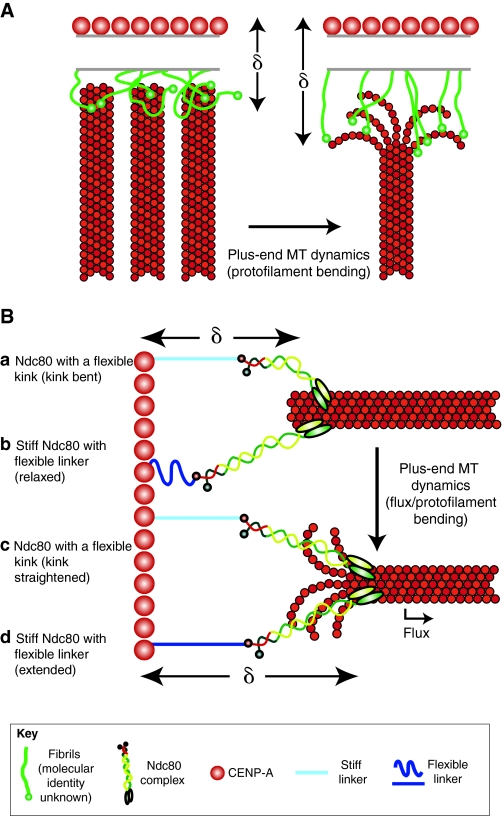Fig. 2.
There are numerous, non-mutually exclusive, explanations for how intrakinetochore stretch could be generated. The term delta (δ) represents the distance between the inner kinetochore component CENP-A and the outer kinetochore component Ndc80. (A) The fibril model, adapted with permission from McIntosh et al. (McIntosh et al., 2008), proposes that filamentous elements bind to bending protofilaments at the plus-end of kinetochore microtubules (MTs). In the absence of bent protofilaments (left), the fibrils would not be extended; however, association with bent protofilaments (right) extends the fibrils and δ increases. The identity of these fibrils is unknown, although Ndc80 has been proposed as a candidate. (B) Lattice-binding models for intrakinetochore stretch. It has been proposed that the Ndc80 complex has a flexible kink (a), which is supported by data from studies of yeast, and that there are compliant elements internal to Ndc80 within the kinetochore (b), which was suggested from mapping human kinetochores. Both may be true, but for simplicity, each example highlights one of these possibilities. Association of Ndc80 with either fluxing kinetochore microtubules or bending protofilaments increases δ by straightening the Ndc80 complex (c), by extending a movable element internal to Ndc80 in the kinetochore (d), or both.

